Progress of Analytical Techniques for Stable Iron Isotopes
-
摘要: 铁是地球上丰度最高的变价元素,在自然界大量分布于各类矿物、岩石、流体和生物体中,并广泛参与成岩作用、成矿作用、热液活动和生命活动过程。铁同位素组成对地球化学、天体化学和生物化学方面提供重要的信息,是同位素地球化学研究领域的热点。铁同位素的精确测量是开展相关研究的重要基础。本文评述了铁同位素测试技术的研究进展,主要包括:①溶液法测试铁同位素样品纯化过程中阴离子树脂的改进;②质谱分析从传统的热电离质谱法发展为多接收电感耦合等离子体质谱法;③激光微区原位测试技术的研发等。在此基础上,对测试过程中会导致产生铁同位素分馏的步骤和校正方法进行了总结,并对各种测试方法的优缺点进行了评述。本文认为:溶液法分析流程长且复杂,但分析精度高(0.03‰,2SD)、方法稳定;微区原位分析方法从纳秒激光剥蚀发展为飞秒激光剥蚀,脉冲持续时间更短、脉冲峰值强度更高(可达1012W),聚焦强度超过1020W/cm2,使其具有分析速度快、空间分辨率高的优势。微区原位法可以从微观角度去讨论铁同位素变化的地球化学过程,但基体效应的存在限制了微区原位铁同位素的广泛应用。因此,缩短溶液法分析流程,开发系列基体匹配的标准样品,是铁同位素分析方法研发的方向。要点
(1) 总结了铁同位素测试技术的研究进展。
(2) 归纳了测试过程产生同位素分馏的机制和校正方法。
(3) 对比了溶液法和微区原位铁同位素测试方法的优缺点。
HIGHLIGHTS(1) Recent advances in Fe isotope analyses were reviewed.
(2) The mechanism and correction method of isotopic fractionation during mass spectrometry analysis were summarized.
(3) The advantages and disadvantages of solution and in situ methods for Fe isotope analyses were compared.
Abstract:BACKGROUNDIron is the most abundant element on earth with variable valences. It is widely distributed in various minerals, rocks, fluids and organisms, and is involved in diagenesis, mineralization, hydrothermal activities and life activities. The study of iron isotope composition provides important information for geochemistry, astrochemistry and biochemistry. The accurate measurement of Fe isotopes is an important basis for the development of related research.OBJECTIVESTo summarize the research progress of Fe isotope measurement technology.METHODSThe current chemical separation and purification methods and main instrumental analysis techniques commonly used for iron isotopes, were compared and analyzed in this review, and the mechanism of different types of fractionations during mass spectrometry were discussed. These advances included:(1) Improvement of anion resin during determination of iron isotope by solution method; (2) Mass spectrometry development from traditional thermal ionization mass spectrometry to multi-collector inductively coupled plasma mass spectrometry; (3) Development of laser in situ analytical technology. On this basis, the steps and calibration methods that would cause iron isotope fractionation during the analysis were summarized, and the advantages and disadvantages of different analytical methods were reviewed.RESULTSThe analysis process of solution method was long and complicated, but the precision was high (0.03‰, 2SD) and the method was stable. In situ iron isotope analysis method developed from nanosecond laser denudation to femtosecond laser denudation, with shorter pulse duration, higher pulse peak intensity (up to 1012W), and focusing intensity exceeding 1020W/cm2. In situ iron isotope analysis method was fast and had high spatial resolution, which can be used to discuss the geochemical process from the microscopic perspective. However, the presence of matrix effects limited the widespread use of iron isotopes.CONCLUSIONSShortening solution analysis process and developing a series of matrix-matched standard samples are the research direction of iron isotope analysis.-
Keywords:
- iron isotope /
- chemical separation /
- solution method /
- mass spectrometry /
- laser ablation /
- matrix effect
-
荧光分析是一种有效的分析方法,由于其具有灵敏度高、背景噪音低、操作简单等优点,在化学传感、生物成像等领域具有广泛应用[1-4]。近几十年来对荧光探针的研究主要集中在CdSe、CdTe等半导体量子点[5]及传统有机荧光染料[6]的制备及功能化,但是由于制备CdSe、CdTe需引入CdCl2等高毒性的化学物质且耗时较长等问题,传统有机荧光染料的生物毒性较强且其抗光漂白性需进一步改善等问题,限制了半导体量子点和有机荧光染料在荧光分析方法中的广泛应用[7]。因此,寻找理想的、有望替代半导体量子点和有机荧光染料的无毒或低毒的新型荧光纳米材料并将其应用于构建新型荧光探针,已逐渐成为化学、工程和生物医学等各个领域的研究热点。
碳是一种以多种形式广泛存在于大气和地壳中的常见元素之一,它不仅对所有生命系统都是不可或缺的,而且在纳米材料的发展进程中起着至关重要的作用[8-9]。近年来,碳纳米材料作为新型的荧光纳米材料之一,日益成为人们关注的对象。碳纳米材料拥有众多的家族成员,如富勒烯、碳纳米管、石墨烯、碳点、纳米金刚石、碳纳米洋葱及碳纳米角等[10-11]。其中,富勒烯是1985年由Kroto等[12]发现并报道的。碳纳米管和石墨烯这两种同素异形体分别是在1991年和2004年被发现并报道的,当时在科学研究领域引起了极大的轰动[13-14]。在碳纳米材料庞大的家族里,碳点(CD)由于具有粒径小、抗光漂白性好、荧光稳定性高、发射光谱可调、表面易功能化、毒性低、生物相容性好、制备过程简单等优点,在催化、生物成像、药物传递、荧光传感、光电子器件等方面拥有广阔的应用前景而备受关注[15-19]。应指出的是,在荧光传感领域碳点可直接或间接地构建新型的荧光探针并用于测定一些重要的金属离子、非金属离子、小分子及大分子物质等。本文在对CD的性质、合成原料及合成方法简要介绍的基础上,详细评述了基于CD荧光探针的设计、构建机理及其在检测微量金属离子中的应用,指出了CD作为新型荧光传感纳米材料所面临的挑战和发展方向。
1. 碳点的性质、合成原料及合成方法
2004年,Xu等[20]在纯化单壁碳纳米管时发现并报道了CD。2006年,Sun等[21]提出了CD的概念。CD是具有无定型到纳米晶结构的准球形、尺寸不大于10nm的纳米颗粒,一般由sp2/sp3碳、含氧/氮的官能团和一些后修饰的特定官能团组成[3]。研究表明,CD具有包括紫外可见吸收[22-23]、荧光[8]、上转换荧光[24]和电化学发光[25-26]等在内的诸多优异的光学性质。迄今为止,众多课题组对CD合成和应用作了许多深入的研究,旨在更好地探究其复杂的光物理和光化学行为的起源,以开发更好的合成方法并进一步拓展其应用范围。
1.1 合成CD的原料
合成CD的原料非常丰富,包括一些较大的碳骨架材料、小分子化学物质、食品、日用品、生活废弃物及植物器官等。
1.1.1 碳骨架材料
Scrivens等在应用电泳方法纯化单壁碳纳米管的过程中发现并报道了CD[20]。Liu等[27]以蜡烛烟灰为原料,通过酸氧化处理的方法制备了尺寸小于2nm的水溶性多色荧光CD,并采用聚丙烯酰氨凝胶电泳对其进行纯化,得到了具有不同荧光发射的CD,它们的量子产率分别为0.8%、1.9%、0.8%。
Qiao等[28]以活性炭为碳源,通过化学氧化方法制备了尺寸约为4.5nm的水溶性多色荧光CD。该CD在pH 1~13范围内均具有良好的生物相容性和较高的荧光量子产率(12.6%)。
1.1.2 小分子化学物质
CD的合成原料除了较大的碳骨架材料之外,一些小分子物质如柠檬酸经常被用作碳源来合成具有高荧光量子产率的CD,但是这些CD一般呈现出蓝色荧光。Zhu等[29]以柠檬酸为碳源通过水热法制备了荧光量子产率高达80%的蓝色荧光CD,其不仅能够检测生物体系中的Fe3+,还可用作印刷油墨。Krysmann等[30]通过热解柠檬酸和乙醇胺制备了荧光量子产率为50%的蓝色荧光CD,并对其可能的发光机理进行了探究。Dong等[31]用柠檬酸和半胱氨酸通过水热法制备了荧光量子产率高达73%的CD,该CD呈现出蓝色荧光且具有不依赖激发的发射行为。
1.1.3 食品、日用品及生活废弃物
合成CD的原料丰富多彩。目前,许多课题组已经报道了采用常见的食品(草莓、蜂蜜、牛奶、生姜),日用品(蚕丝)及生活中的废弃物(纸灰、废煎炸油)制备出荧光CD的工作[32-38]。Wang等[34]报道了使用牛奶制备CD的绿色合成方法。该制备过程环保、简单、高效。所制备的蓝色荧光碳点,尺寸约为3nm、荧光量子产率为12%,可作为荧光探针对人脑胶质瘤癌细胞进行高分辨成像。Hu等[38]发展了一种利用废煎炸油和浓硫酸制备蓝色荧光CD的方法,所得到的CD尺寸均匀并显示出部分无序的石墨结构且对pH变化非常敏感,可用于测定pH值。
1.1.4 植物器官
Zhu等[39]发现热解不同的植物叶片可得到发出明亮蓝色荧光的CD,其可用于化学传感、图案印刷及防伪技术等。该制备方法无需表面钝化处理或使用有毒及昂贵的溶剂和原料,为大规模生产CD提供了新的契机。
1.1.5 含苯环结构的化合物
采用上述几类原料合成的CD多具有蓝色荧光。由于生物样品的自荧光干扰较大,从而限制了其在生物样品分析和生物成像研究中的应用。相比之下,发射红光的CD可以有效解决生物样品的自荧光干扰问题。增加共轭程度可能会使得CD的荧光发射波长红移,因此选择含有苯环结构的碳源可能会有效改善CD的荧光性质。Jiang等[40]以邻、间、对苯二胺为碳源,分别得到了具有上述转换荧光性质的蓝色、绿色及红色荧光CD,其细胞毒性低,具有优异的多色细胞成像能力。Liu等[41]用2, 5-二氨基苯磺酸和4-氨基苯硼酸盐酸盐合成了荧光量子产率为5.44%的红色荧光CD,其可用于比色和荧光双模式检测Fe3+。
Ma等[42]以间氨基苯酚和草酸为原料制备了蓝/绿光双发射的CD。当激发波长为380nm时,所制备的CD在430nm和510nm处具有双荧光发射峰。首先,对氨基苯酚和草酸小分子脱水形成了聚合物簇。随着反应温度的进一步升高,聚合物簇逐渐被碳化最终生成了小颗粒状蓝/绿光双发射的CD。该CD无需修饰可直接作为比率荧光探针检测纺织品、钢铁样品和工业废水中的六价铬离子。
Liu等[43]以2, 5-二氨基甲苯硫酸盐为碳源一锅法制备了红/绿光双发射的CD(RGDE CD)。当激发波长为370nm时,RGDE CD在525nm和603nm处具有两个荧光发射峰(图 1)。基于RGDE CD无需任何修饰即可作为ONOO-荧光探针的性质,建立了成本低廉、响应速度快、灵敏度高、选择性好的测定ONOO-的比率荧光新方法。通过分别计算RGDE CD和ONOO-对应的HOMO、LUMO能级,深入研究了ONOO-导致RGDE CD荧光淬灭的机理。该比率荧光探针已成功用于细胞内痕量ONOO-的测定。
此外,Liu等[44]还以2, 3-二氨基苯甲酸盐酸盐为碳源一锅法合成了红/黄光双发射的碳点(RYDE CD)和红/橙光双发射的碳点(RODE CD)(图 2)。当激发波长分别为520nm和535nm时,RYDE CD和RODE CD分别在566nm/621nm和595nm/644nm处具有荧光发射峰。所制备的RYDE CD和RODE CD具有优异的抗光漂白性和良好的耐盐性。基于RYDE CD无需修饰可直接作为亚硝酸盐荧光探针的性质,建立了高灵敏性和高选择性测定熏肉、香肠、咸菜和牛奶等样品中痕量亚硝酸盐的比率荧光新方法并深入研究了相应的检测机理;基于温度对RYDE CD荧光强度的影响,建立了检测温度的比率荧光新方法。此外,RYDE CD细胞毒性低且生物相容性好,可成功用于细胞成像。
1.2 CD的合成方法
在过去几十年中,人们不断地尝试发展了许多合成CD的方法。根据合成原料(1.1节)可将CD的合成方法分为自上而下法和自下而上法两大类[45]。
自上而下法是指将较大的碳骨架材料如碳纳米管[20]、活性炭[28]、炭黑[27]、纳米金刚石[46]等通过化学或物理的方法不断进行剥离制备CD的过程。常见的自上而下法主要包括电弧放电法[47]、激光烧蚀法[21]和电化学法[48]等。自上而下法制备的CD的荧光量子产率比较低,通常需要将其表面进行化学处理以提高荧光量子产率。此外,由于剥离的过程是非选择性的,不能有效地控制CD的形态和粒径分布。
为了克服自上而下法合成CD的荧光量子产率较低等问题,人们发展了在适当条件下依赖于有机小分子碳源碳化或者逐步熔融的方式制备CD的化学方法,即自下而上法。自下而上法可以较好地控制CD的尺寸、形貌及物理化学性质。目前,自下而上法主要包括水热法[29]、模板辅助法[49]、微波法[50]和超声辅助法[51]等。这些方法所合成的CD在荧光探针构建、目标分析物检测、生物成像等方面均有广泛的应用[52-54]。
2. 基于CD荧光探针的设计构建及其在检测金属离子中的应用
2.1 基于CD荧光探针的设计构建及其对金属离子的检测机理
由于CD具有优异的光学性质以及较低的细胞毒性和良好的生物相容性[55],常被用于直接或间接地设计构建新型的荧光探针来检测金属离子等目标分析物[56-57]。实际样品中通常存在多种金属离子。因此,CD荧光探针对金属离子的特异性识别对探针的设计及测定结果的准确性至关重要。通常,根据CD表面官能团和金属离子的特点及它们之间的特异性作用来提高检测的选择性。迄今为止,设计构建对金属离子具有特异性识别能力的CD荧光探针主要基于以下三种策略[3]:①基于CD表面的官能团直接特异性识别金属离子;②通过特异性配体对CD进行修饰以提高其对金属离子的特异性识别能力;③将CD与其他物质如淬灭剂结合形成复合物以提高其对金属离子的特异性识别能力。目前,CD荧光探针对金属离子的检测主要有“Turn-off”[58]和“Turn-on”[59]两种模式。这两种模式所涉及的检测机理主要包括电子转移[60]、内过滤效应[61]、荧光共振能量转移[59, 62]等。
2.1.1 基于CD与目标分析物的直接相互作用
CD与目标分析物直接相互作用会引起CD的荧光信号发生变化。基于这种信号的变化,CD可直接作为荧光探针用于测定目标分析物的含量。CD表面的官能团可以特异性地与金属离子发生配位作用,使得其荧光发生显著的淬灭,因此常被用于直接测定一些金属离子的含量。例如,由于氢氧化铁的Ksp=4.0×10-38,导致Fe3+和酚羟基之间会发生强烈的特异性配位作用,因此表面富含酚羟基的CD可以实现对Fe3+的选择性检测[3]。Zhu等[29]合成了荧光量子产率高达80%的CD,其表面的酚羟基与Fe3+之间有很强的亲和力。当加入Fe3+后,CD激发态的电子会部分跃迁到Fe3+的d轨道,发生非辐射电子跃迁,导致CD的荧光淬灭。基于此,该CD可直接作为荧光探针选择性检测Fe3+。此外,CD表面富含的大量氨基和Cu2+之间会发生强烈的配位作用,形成的铜胺络合物紫外吸收光谱可以与部分CD的荧光激发或发射光谱重叠,发生内过滤效应导致CD的荧光淬灭。Dong等[61]制备了能与Cu2+发生络合作用的表面富含氨基的CD,形成的铜胺络合物和CD之间的内过滤效应使得CD荧光淬灭,从而实现了CD直接作为荧光探针对Cu2+进行选择性检测。
2.1.2 基于特异性配体修饰后的CD与目标分析物相互作用
将CD进行后修饰再与分析物相互作用也是一种策略。一般需要将已知的特异性配体修饰到CD表面以构建具有高灵敏度和高选择性的荧光探针。例如,将硼酸基团修饰到CD表面后,硼酸基团和葡萄糖的顺式二醇结构会形成稳定的络合物[63]。基于此,构建了很多用于高选择性检测葡萄糖的荧光探针。此外,胸腺嘧啶(T)化学结构简单,已被证明是能够以T-Hg2+-T复合物形式识别Hg2+的最具特异性的配体之一,该过程不存在任何其他重金属离子的干扰[64]。因此,可以通过将CD和某些生物识别组件(如胸腺嘧啶等)结合提高CD检测Hg2+的选择性。Xu等[64]基于Hg2+可作为有效联接邻近胸腺嘧啶的桥梁,利用CD表面上共价修饰胸腺嘧啶和Hg2+的桥梁作用促使CD团聚,导致CD荧光发生淬灭,设计并构建了用于特异性检测Hg2+的荧光探针。
2.1.3 基于CD与其他物质形成复合物后与目标分析物相互作用
CD也可以与其他物质如淬灭剂[65]等结合形成复合物使得其荧光发生淬灭,加入目标检测物之后,淬灭剂和目标检测物之间发生相互作用导致CD的荧光得以恢复。例如,Li等[59]将CD和钴氢氧化物纳米片结合,使得其荧光通过荧光共振能量转移发生淬灭。然后加入还原性的抗坏血酸,由于抗坏血酸和钴氢氧化物纳米片发生了氧化还原反应,从而破坏了钴氢氧化物纳米片的片层结构,使得CD的荧光恢复。基于这种荧光响应信号,实现了对抗坏血酸及与抗坏血酸有关的酶的检测。此外,将CD和其他荧光物质结合还可以构建比率荧光探针。如Liang等[62]基于CD和金纳米簇(AuNCs)间的荧光共振能量转移成功构建了比率荧光探针(图 3)。加入的S2-会竞争性地结合在AuNCs表面形成Au2S,抑制荧光共振能量转移的发生,使得CD的荧光增强而AuNCs的荧光减弱。基于CD和AuNCs荧光强度比值的变化,实现了对环境样品中S2-的准确测定。
2.2 CD荧光探针在检测金属离子中的应用
由于CD具有独特的结构和优异的光学性能,已在生物成像、荧光传感、药物运载、催化剂制备、能源开发等领域应用前景广阔[66-69]。
近年来,全球经济和工业化的快速增长引起了越来越多的环境问题。重金属离子是一种易在生态系统中富集的难降解污染物[70]。根据美国环境保护署(EPA)的统计,砷离子(As3+)、汞离子(Hg2+)、铅离子(Pb2+)、铜离子(Cu2+)、镉离子(Cd2+)、镍离子(Ni2+)和铬离子(Cr6+)属于最具毒性的重金属离子。人体内摄入低浓度的这些金属离子时,可导致极其严重的健康问题[71]。例如铁离子(Fe3+)、锌离子(Zn2+)和铜离子(Cu2+)等会参与人体新陈代谢过程,对人类健康至关重要。但是,当这些金属离子的浓度较高时,它们会破坏人体免疫系统,诱发一系列严重的疾病[72-73]。因此,快速、灵敏、准确地测定微量金属离子在环境保护、食品科学和农业化学以及材料学等领域具有重要意义。传统的检测痕量金属离子的方法[74-78]有原子吸收光谱法(AAS)、毛细管电泳法(CE)、电感耦合等离子体发射光谱法(ICP-OES)、离子色谱-紫外可见光谱法(IC-UV-Vis)、电感耦合等离子体质谱法(ICP-MS)、微探针法(MP)和X射线荧光光谱法(XRF)。这些方法虽然具有高灵敏度和选择性,但仪器成本高、样品制备复杂以及需要专业人员和预富集程序等操作。荧光分析是一种有效的分析方法,由于其具有灵敏度高、背景噪音低、操作简单等优点而备受人们的关注。下面对CD在荧光传感领域中检测金属离子的应用进展进行评述。
2.2.1 CD荧光探针检测生物金属离子
(1) 铁离子(Fe3+)
铁是人体和动物体许多生理过程所必需的第一微量元素。Fe3+可以和人体内多种调节蛋白质结合,在新陈代谢过程中扮演非常重要的角色。人体内Fe3+含量异常均可干扰细胞内环境平衡,诱发各种生理疾病[79-80]。因此,对Fe3+的高灵敏检测具有重要意义。目前,基于金属纳米簇[81]、有机染料[82]、半导体量子点[83]、金属有机框架材料[84]等已经发展了诸多荧光探针,这些探针用于检测Fe3+通常具有较好的灵敏度和选择性。然而,制备这些荧光探针通常需要多步骤合成及纯化步骤,比较耗时。CD已被证明其合成原料低廉、制备过程简单、细胞毒性低、生物相容性好,是一种理想的可用于构建荧光探针的新型荧光纳米材料。
Zhang等[60]以柠檬酸为碳源、聚乙烯二胺为氮源,通过固相合成法制备了氮掺杂CD(N-CD)。结果表明,N原子的掺杂使得CD的荧光量子产率从9%提高到31%,荧光量子产率的显著提高应该源于N原子对CD化学结构和电子特性的调控。基于N-CD表面的含氧官能团与Fe3+之间的配位作用使其荧光淬灭的现象,实现了对生物样品中Fe3+的测定(图 4)。
Feng等[85]以胰蛋白酶和多巴胺为前驱体,通过一步法在低温条件下制备了荧光CD。该步骤避免了任何加热操作和使用有机试剂,提供了一种“绿色”、有效的合成策略。制备的CD具有良好的水溶性、耐盐性和光稳定性。基于内滤效应和静态淬灭的协同作用,实现了尿液和血清样品中Fe3+的测定。
(2) 锌离子(Zn2+)
锌是人体中最常见的第二微量过渡金属元素,在促进酶调节、基因表达和神经相关信号传递等过程中发挥重要作用。人体内Zn2+含量异常会诱发阿尔茨海默症等疾病[86]。因此,对Zn2+的高灵敏检测对于探究某些疾病的生理过程和病因具有重要意义。目前已报道的测定Zn2+的方法有荧光分析法[87]、毛细管电泳法[88]和紫外可见吸收光谱法[89]等。尤其是荧光分析法具有灵敏度高、背景噪音低、操作简单等优点。因此,发展基于低毒性CD荧光探针的荧光分析新方法用于灵敏性、选择性检测细胞内Zn2 +非常重要。
Zhang等[90]合成了喹啉衍生物修饰的CD,基于喹啉衍生物对Zn2+的特异性识别作用使得CD荧光增强的现象,建立了高灵敏、高选择性检测Zn2+的荧光方法,检测限为6.4nmol/L(图 5)。该方法还可以实现细胞内Zn2+的实时成像。
(3) 铜离子(Cu2+)
铜是人们日常生活中必不可少的过渡金属元素,常存在于海水、河水、湖水、饮用水和自来水中。Cu2+的存在对生物系统的正常免疫代谢过程起着至关重要的作用。然而,浓度较高的Cu2+长期与人体接触,会产生较大的毒性,引起许多神经退化性疾病,如威尔逊氏病、朊病毒病和阿尔茨海默症等[91-92]。因此,对Cu2+的高灵敏检测也十分重要。迄今为止,作为测定Cu2+的探针主要包括半导体量子点、有机染料和小分子荧光探针[93-95]。但是,这些荧光探针存在制备过程中需使用高毒性的化学物质,或合成过程复杂、抗光漂白能力较差等问题。CD作为一种新型的荧光纳米材料,以其构建的荧光探针可有效避免上述问题。
Gedda等[96]以对虾壳为原料,发展了一种简便、经济、有效地合成绿色荧光CD的方法。所制备的CD分散性高、稳定性好、水溶性好,量子产率为9%。基于Cu2+和CD之间内过滤效应和胺铜的形成使得CD荧光淬灭的现象,建立了高灵敏、高选择性检测Cu2+的荧光新方法,检测限为5nmol/L。该方法可用于饮用水、河水、海水等多种样品中Cu2+的快速测定。
2.2.2 CD荧光探针检测其他重金属离子
通常,检测重金属离子的传统方法如电感耦合等离子体质谱、原子吸收/发射光谱法等通常需要昂贵的仪器设备及复杂的操作程序[97-101],从而限制了这些方法对Hg2+、As3+、Pb2+、Cr6+、Cd2+等重金属离子的实时检测,而基于CD荧光探针建立的荧光分析方法具有快速、简便、灵敏度高、选择性好等诸多优点,对于建立选择性好、灵敏度高的检测以上微量重金属离子的方法具有实际意义。
(1) 汞离子(Hg2+)
Hg2+是一种最危险的、广泛存在的污染物之一,已引发了严重的环境和健康问题[102-103]。研究表明Hg2+很容易通过皮肤、呼吸道和消化道组织导致DNA损伤、细胞分裂障碍和中枢神经系统的永久性损害[104]。因此,发展选择性好、灵敏度高的检测微量Hg2+的方法十分重要。
Liu等[105]以柠檬酸和(NH4)3PO4分别作为碳源和氮源,通过固相合成法简单、快速地制备了荧光量子产率高达36%的氮掺杂CD(N-CD)。基于N-CD表面的类吡咯N、N-H和Hg2+之间的协同配位作用导致其荧光淬灭的现象,建立了一种简单、快速地测定食品和化妆品等样品中Hg2+含量的荧光新方法。该N-CD具有低细胞毒性和良好的生物相容性,可成功用于细胞成像。基于N-CD的良好水溶性,还可作为荧光墨水使用。
Lu等[106]以柚子皮为原料,通过水热法制备了水溶性的CD,荧光量子产率为6.9%。该CD可直接作为荧光探针对Hg2+进行选择性检测,检测限低至0.23nmol/L。Hg2+对CD的荧光淬灭可能是通过有效的电子或能量转移过程促进了无辐射的电子/空穴复合湮灭。
(2) 砷离子(As3+)
饮用水中的砷污染在发展中国家是一个非常严重的问题[107]。在砷元素的各种形式中,As3+被认为是最有害的污染物。根据世界卫生组织的标准,饮用水中As3+的最大允许量为10μg/L(133nmol/L)。如果人体中As3+的持续摄入量超过10μg/L,会诱发皮肤损伤、免疫及代谢系统紊乱、高危肺癌和膀胱癌等,严重威胁人类健康[99]。
Gupta等[99]以柠檬酸和硫代硫酸钠为原料,采用微波辅助热解法合成了硫掺杂的多色荧光CD。所制备的CD经GSH修饰后与As3+之间发生相互作用形成复合物导致其荧光发生淬灭。基于上述现象建立了高灵敏性、高选择性检测As3+的荧光及可视化新方法,检测限为32pmol/L。此外,应用该方法成功实现了河水和自来水中As3+的准确测定。
(3) 铅离子(Pb2+)
Pb2+被广泛应用于颜料、水管、蓄电池、防腐涂料、合金中,并以不同的方式释放于环境中。据报道,当血液中Pb2+浓度高于5μmol/L时,可导致贫血、生殖功能障碍、神经系统功能障碍、发育障碍等疾病。此外,Pb2+浓度过高甚至会导致死亡[97, 108]。
Liu等[97]以柠檬酸钠和聚丙烯酰胺为原料,通过水热法合成了蓝色荧光CD。Pb2+和CD形成CD-Pb2+复合物使得CD的荧光淬灭,再加入能与Pb2+络合的PPi可使CD荧光得以恢复。基于此现象建立了检测Pb2+和PPi的荧光新方法,检测限分别为4.6nmol/L、54nmol/L。
(4) 铬离子(Cr6+)
Cr6+在电镀、皮革鞣制、染料等工业生产中有着广泛的应用。但是,Cr6+具有致突变性和致癌性,严重威胁人类的身体健康[109]。
Ma等[42]以间氨基苯酚和草酸为原料制备了蓝/绿光双发射的CD。当激发波长为380nm时,所制备的CD在430nm和510nm处具有两个荧光发射峰。该CD无需修饰可直接作为比率荧光探针对纺织品、钢铁样品和工业废水中的Cr6+含量进行测定。
Mutuyimana等[110]以4-氨基乙酰苯胺盐酸盐和4-乙酰氨基苯甲醛为原料,通过一步法合成了黄色荧光CD。所制备的CD具有良好的水溶性、耐盐性和荧光稳定性。基于Cr6+和CD之间发生静态淬灭作用使得CD荧光被淬灭的现象,建立了测定Cr6+的荧光新方法,检测限为0.13μmol/L。该方法灵敏度高、选择性好,已成功应用于鱼肉和小虾米中Cr6+的测定,回收率结果良好。
(5) 镉离子(Cd2+)
镉元素广泛存在于塑料、化肥、农药和化石燃料中。土壤、水和食物中的Cd2+污染通过食物链对人类身体健康构成了潜在的致命威胁[111-112],可导致骨质疏松症、肾功能障碍、癌症、阿尔茨海默病、帕金森病和肌萎缩侧索硬化症等神经退行性疾病。
Niu等[101]将CD和金纳米团簇(AuNCs)相结合构建了CD-AuNCs比率荧光探针。基于AuNCs表面官能团和Cd2+之间的静电吸附和配位作用导致其荧光淬灭的现象,建立了测定Cd2+的比率荧光新方法,检测限为32.5nmol/L。
3. 发展问题与展望
全球经济和工业化的快速发展加剧了重金属污染物向自然环境中的排放,对人类和生态系统构成了严重威胁,高毒性且易在生态系统中富集的难降解金属污染物对自然环境和人体健康造成的影响更为严重。为了改善人类的生存质量,急需发展高灵敏度、高选择性、环境友好的测定方法。由于CD具有荧光稳定性高、表面易功能化、毒性低等优点,已成为发展高灵敏度、高选择性的测定微量金属离子的一种优异的新型荧光探针并得到了较为广泛的应用。
本文认为,为了使CD荧光探针能更好地满足检测微量金属离子的要求,今后应重点围绕以下四个方面开展研究工作:①深入研究相应的检测机理,为新型荧光探针的设计构建提供坚实的理论指导;②发展新的检测模式以拓宽CD荧光探针的应用范围;③针对待测的微量金属离子的性质和样品基质,设计合成新型CD荧光探针;④建立可用于复杂基质样品的荧光新方法,为复杂样品特别是生物样品中微量金属离子的测定提供强有力的技术支持。
-
图 1 Fe与基质的化学分离淋洗曲线[33]
Figure 1. Elution curve for Fe element separation
-
Beard B L, Johnson C M.High precision iron isotope measurements of terrestrial and lunar materials[J]. Geochimica et Cosmochimica Acta, 1999, 63(11-12):1653-1660. doi: 10.1016/S0016-7037(99)00089-7
刘英俊, 曹励明, 李兆麟.元素地球化学[M].北京:科学出版社, 1984. Liu Y J, Cao L M, Li Z L.Element Geochemistry[M]. Beijing:Science Press, 1984.
牟保磊.元素地球化学[M]北京:北京大学出版社, 1999. Mu B L.Element Geochemistry[M]. Beijing:Peking University Press, 1999.
Dauphas N, John S G, Rouxel O.Iron isotope systematics[J]. Reviews in Mineralogy and Geochemistry, 2017, 82(1):415-510. doi: 10.2138/rmg.2017.82.11
何永胜, 胡东平, 朱传卫.地球科学中铁同位素研究进展[J].地学前缘, 2015, 22(5):54-71. http://d.old.wanfangdata.com.cn/Periodical/dxqy201505004 He Y S, Hu D P, Zhu C W.Progress of iron isotope geochemistry in geoscience[J.Earth Science Frontiers, 2015, 22(5):54-71. http://d.old.wanfangdata.com.cn/Periodical/dxqy201505004
Beard B L, Johnson C M, Skulan J L, et al.Application of Fe isotopes to tracing the geochemical and biological cycling of Fe[J]. Chemical Geology, 2003, 195(1):87-117. http://www.wanfangdata.com.cn/details/detail.do?_type=perio&id=844fae4abeb031e1d538eb65e08bd2f2
Johnson C M, Beard B L, Roden E E.The iron isotope fingerprints of redox and biogeochemical cycling in modern and ancient earth[J]. Annual Review of Earth and Planetary Sciences, 2008, 36(1):457-493. doi: 10.1146/annurev.earth.36.031207.124139
Dauphas N, Rouxel O.Mass spectrometry and natural va-riations of iron isotopes[J]. Mass Spectrometry Reviews, 2006, 25:515-550. doi: 10.1002/mas.20078
Beard B L, Johnson C M, von Damm K L, et al.Iron isotope constraints on Fe cycling and mass balance in oxygenated Earth oceans[J]. Geology, 2003, 31(7):629-632. doi: 10.1130/0091-7613(2003)031<0629:IICOFC>2.0.CO;2
Kodolányi J, Stephan T, Trappitsch R, et al.Iron and nickel isotope compositions of presolar silicon carbide grains from supernovae[J]. Geochimica et Cosmochimica Acta, 2018, 221:127-144. doi: 10.1016/j.gca.2017.05.029
Conway T M, John S G.Quantification of dissolved iron sources to the North Atlantic Ocean[J]. Nature, 2014, 511(7508):212-215. doi: 10.1038/nature13482
Anbar A D.Iron stable isotopes:Beyond biosignatures[J]. Earth and Planetary Science Letters, 2004, 217(3):223-236. http://d.old.wanfangdata.com.cn/NSTLQK/NSTL_QKJJ025852629/
Labidi J.Iron Isotope Composition of Depleted MORB[C]//Proceedings of Agu Fall Meeting (AGU Fall Meeting Abstracts), 2015.
Teng F Z, Dauphas N, Huang S, et al.Iron isotopic systematics of oceanic basalts[J]. Geochimica et Cosmochimica Acta, 2013, 107:12-26. doi: 10.1016/j.gca.2012.12.027
Sossi P A, Nebel O, Anand M, et al.On the iron isotope composition of Mars and volatile depletion in the terrestrial planets[J]. Earth and Planetary Science Letters, 2016, 449:360-371. doi: 10.1016/j.epsl.2016.05.030
Sossi P A, O'Neill H St C.The effect of bonding environment on iron isotope fractionation between minerals at high temperature[J]. Geochimica et Cosmochimica Acta, 2016, 196:121-143. http://www.wanfangdata.com.cn/details/detail.do?_type=perio&id=941cca5adb4430ecca32fd1de9314be6
Rouxel O, Toner B M, Manganini S J, et al.Geochemistry and iron isotope systematics of hydrothermal plume fall-out at East Pacific Rise 9°50'N[J]. Chemical Geology, 2016, 441:212-234. doi: 10.1016/j.chemgeo.2016.08.027
Weyer S, Ionov D A.Partial melting and melt percolation in the mantle:The message from Fe isotopes[J]. Earth and Planetary Science Letters, 2007, 259:119-133. doi: 10.1016/j.epsl.2007.04.033
Zhao Y, Xue C J, Liu S A, et al.Redox reactions control Cu and Fe isotope fractionation in a magmatic Ni-Cu mineralization system[J]. Geochimica et Cosmochimica Acta, 2019, 249(15):42-58.
Syverson D D, Luhmann A J, Tan C, et al.Fe isotope fractionation between chalcopyrite and dissolved Fe during hydrothermal recrystallization:An experimental study at 350℃ and 500bars[J]. Geochimica et Cosmochimica Acta, 2017, 200:87-109. doi: 10.1016/j.gca.2016.12.002
Williams K B, Krawczynski M J, Nie N X, et al.The Role of Differentiation Processes in Mare Basalt Iron Isotope Signatures[C]//Proceedings of Lunar and Planetary Science Conference, 2016.
Bau M, von Blanckenburg F, Ohmoto H.Iron isotope stratification of Late Archean Seawater:Evidence from dolomites and banded iron-formations[J]. Nature Immunology, 2017, 16 (5):467-75.
McCoy V E, Asael D, Planavsky N.Benthic iron cycling in a high-oxygen environment:Implications for interpreting the Archean sedimentary iron isotope record[J]. Geobiology, 2017, 15(5):619-627. doi: 10.1111/gbi.12247
Liu K, Wu L L, Couture R M, et al.Iron isotope fractionation in sediments of an oligotrophic freshwater lake[J]. Earth and Planetary Science Letters, 2015, 423:164-172. doi: 10.1016/j.epsl.2015.05.010
Kurzweil F, Pasava J, Drost K, et al.Molybdenum (Mo) and Iron (Fe) Isotope Evidence of Tepla-Barrandian Black Shales against Widespread Deep Ocean Oxygenation in the Late Neoproterozoic[C]//Proceedings of the Fall Meeting 2014.American Geophysical Union, 2014.
Severmann S, Lyons T W, Anbar A, et al.Modern iron isotope perspective on the benthic iron shuttle and the redox evolution of ancient oceans[J]. Geology, 2008, 36(6):487-490. doi: 10.1130/G24670A.1
Shollenberger Q R, Brennecka G A, Schuth S, et al.Iron Isotope Systematics of Refractory Inclusions and the Search for the Source of Nucleosynthetic Anomalies[C]//Proceedings of the 48th Lunar and Planetary Science Conference, 2017.
Poitrasson F, Halliday A N, Lee D C, et al.Iron isotope differences between Earth, Moon, Mars and Vesta as possible records of contrasted accretion mechanisms[J]. Earth and Planetary Science Letters, 2004, 223(3-4):0-266.
Belshaw N S, Zhu X K, Guo Y, et al.High precision measurement of iron isotopes by plasma source mass spectrometry[J]. International Journal of Mass Spectrometry, 2000, 197(1-3):191-195. doi: 10.1016/S1387-3806(99)00245-6
唐索寒, 朱祥坤, 李津, 等.用于多接收器等离子体质谱测定的铁铜锌同位素标准溶液研制[J].岩矿测试, 2016, 35(2):127-133. doi: 10.15898/j.cnki.11-2131/td.2016.02.003 Tang S H, Zhu X K, Li J, et al.New standard solutions for measurement of iron, copper and zinc isotopic compositions by multi-collector inductively coupled plasma-mass spectrometry[J]. Rock and Mineral Analysis, 2016, 35(2):127-133. doi: 10.15898/j.cnki.11-2131/td.2016.02.003
孙剑, 朱祥坤, 陈岳龙.碳酸盐矿物铁同位素测试的选择性溶解方法研究——以白云鄂博矿床赋矿白云岩为例[J].岩矿测试, 2013, 32(1):28-33. doi: 10.3969/j.issn.0254-5357.2013.01.005 Sun J, Zhu X K, Chen Y L.The selective dissolution of carbonate minerals for Fe isotope determination:A case study on the ore-hosting dolomite marble in the Bayan Obo ore deposit[J]. Rock and Mineral Analysis, 2013, 32(1):28-33. doi: 10.3969/j.issn.0254-5357.2013.01.005
唐索寒, 闫斌, 朱祥坤, 等.玄武岩标准样品铁铜锌同位素组成[J].岩矿测试, 2012, 31(2):218-224. doi: 10.3969/j.issn.0254-5357.2012.02.004 Tang S H, Yan B, Zhu X K, et al.Iron, copper and zinc isotopic compositions of basaltic standard reference materials[J]. Rock and Mineral Analysis, 2012, 31(2):218-224. doi: 10.3969/j.issn.0254-5357.2012.02.004
侯可军, 秦燕, 李延河.Fe同位素的MC-ICP-MS测试方法[J].地球学报, 2012, 33(6):885-892. http://d.old.wanfangdata.com.cn/Periodical/dqxb201206008 Hou K J, Qin Y, Li Y H.High-precision measurements of Fe isotopes using MC-ICP-MS[J]. Acta Geoscientica Sinica, 2012, 33(6):885-892. http://d.old.wanfangdata.com.cn/Periodical/dqxb201206008
Zhu X K, Guo Y, Williams R J P, et al.Mass fractionation processes of transition metal isotopes[J].Earth and Planetary Science Letters, 2002, 200(1-2):47-62. doi: 10.1016/S0012-821X(02)00615-5
Rosman K J R, Taylor P D P.Isotopic compositions of the elements 1997 (Technical Report)[J]. Pure and Applied Chemistry, 1998, 70(1):217-235. doi: 10.1351/pac199870010217
Kraus K A, Moore G E.Anion exchange studies:The divalent transition elements manganese to zinc in hydrochloric acid[J]. Journal of the American Chemical Society, 1953, 75:1460-1462. doi: 10.1021/ja01102a054
Kosler J, Pedersen R B, Kruber C, et al.Comment on "Analysis of Fe isotopes in sulfides and iron meteorites by laser ablation high-mass resolution multi-collector-ICP mass spectrometry"—Reply[J]. Journal of Analytical Atomic Spectrometry, 2006, 21(2):214-216. doi: 10.1039/B512647A
Strelow F W E.Improved separation of iron from copper and other elements by anion-exchange chromatography on a 4% cross-linked resin with high concentrations of hydrochloric acid[J]. Talanta, 1980, 27(9):727-732. doi: 10.1016/0039-9140(80)80166-4
Anbar A D.Nonbiological fractionation of iron isotopes[J]. Science, 2000, 288(5463):126-128. doi: 10.1126/science.288.5463.126
Dauphas N, Janney P E, Mendybaev R A, et al. Chromatographic separation and multicollection ICPMS analysis of iron.Investigating mass-dependent and independent isotope effects[J]. Analytical Chemistry, 2004, 76(19):5855-5863. doi: 10.1021/ac0497095
van der Walt T N, Strelow F W E, Haasbroek F J.Separation of iron-52 from chromium cyclotron targets on the 2% cross-linked anion-exchange resin AG1-X2 in hydrochloric acid[J]. Talanta, 1985, 32(4):313-317. doi: 10.1016/0039-9140(85)80086-2
Marechal C N.Precise analysis of copper and zinc isotopic compositions by plasma-source mass spectrometry[J]. Chemical Geology, 1999, 156(1-4):251-273. doi: 10.1016/S0009-2541(98)00191-0
Archer C, Vance D.Mass discrimination correction in multiple-collector plasma source mass spectrometry:An example using Cu and Zn isotopes[J]. Journal of Analytical Atomic Spectrometry, 2004, 19(5):656-665. doi: 10.1039/b315853e
Sossi P A, Halverson G P, Nebel O, et al.Combined separation of Cu, Fe and Zn from rock matrices and improved analytical protocols for stable isotope determination[J]. Geostandards and Geoanalytical Research, 2015, 39(2):129-149. doi: 10.1111/j.1751-908X.2014.00298.x
Poitrasson F, Freydier R.Heavy iron isotope composition of granites determined by high resolution MC-ICP-MS[J]. Chemical Geology, 2005, 222(1):132-147.
唐索寒, 闫斌, 李津.少量AG1-X4阴离子交换树脂分离地质标样中的铁及铁同位素测定[J].地球化学, 2013(1):46-52. doi: 10.3969/j.issn.0379-1726.2013.01.006 Tang S H, Yan B, Li J.Separation of Fe using a small amount of AG1-X4 anion exchange resin and Fe isotope compositions of geological reference materials[J]. Geochimica, 2013(1):46-52. doi: 10.3969/j.issn.0379-1726.2013.01.006
马信江, 梁细荣, 涂相林, 等.AG MP-1M阴离子分离Cu、Fe、Zn及其在Fe同位素测定上的应用[J].地球化学, 2009, 38(5):70-76. http://d.old.wanfangdata.com.cn/Periodical/dqhx200905007 Ma X J, Liang X R, Tu X L, et al.Separation of Cu, Fe and Zn using AG MP-1M anion exchange resin and applications for Fe isotope determination[J]. Geochimica, 2009, 38(5):70-76. http://d.old.wanfangdata.com.cn/Periodical/dqhx200905007
孙剑, 朱祥坤, 唐索寒, 等.AG MP-1阴离子交换树脂元素分离方法再研究[J].高校地质学报, 2006, 24(3):398-403. doi: 10.3969/j.issn.1006-7493.2006.03.014 Sun J, Zhu X K, Tang S H, et al.Further investigation on elemental separation using AG MP-1 anion exchange resin[J]. Geological Journal of China Universities, 2006, 24(3):398-403. doi: 10.3969/j.issn.1006-7493.2006.03.014
Craddock P R, Dauphas N.Iron isotopic compositions of geological reference materials and chondrites[J]. Geostandards and Geoanalytical Research, 2011, 35(1):101-123. doi: 10.1111/j.1751-908X.2010.00085.x
Sossi P A, Halverson G P, Nebel O, et al.Combined separation of Cu, Fe and Zn from rock matrices and improved analytical protocols for stable isotope determination[J]. Geostandards and Geoanalytical Research, 2015, 39(2):129-149. doi: 10.1111/j.1751-908X.2014.00298.x
Liu S A, Li D, Li S, et al.High-precision copper and iron isotope analysis of igneous rock standards by MC-ICP-MS[J]. Journal of Analytical Atomic Spectrometry, 2013, 29(1):122-133. http://www.wanfangdata.com.cn/details/detail.do?_type=perio&id=be3cff31ad013d50e69a4d2225615a6b
Taylor P D P, Maeck R, Bièvre P D.Determination of the absolute isotopic composition and atomic weight of a reference sample of natural iron[J]. International Journal of Mass Spectrometry and Ion Processes, 1992, 121(1-2):111-125. doi: 10.1016/0168-1176(92)80075-C
Rudge J F, Reynolds B C, Bourdon B.The double spike toolbox[J]. Chemical Geology, 2009, 265(3-4):0-431. http://www.wanfangdata.com.cn/details/detail.do?_type=perio&id=e97d8b2ef9fa6c95a32479f7de88e1bb
Zhu X K, Makishima A, Guo Y, et al.High precision measurement of titanium isotope ratios by plasma source mass spectrometry[J]. International Journal of Mass Spectrometry, 2002, 220(1):21-29. http://www.wanfangdata.com.cn/details/detail.do?_type=perio&id=9099dd076fb6a250206f149ef5360336
Kehm K, Hauri E H, Alexander C M O, et al.High precision iron isotope measurements of meteoritic material by cold plasma ICP-MS[J]. Geochimica et Cosmochimica Acta, 2003, 67(15):2879-2891. doi: 10.1016/S0016-7037(03)00080-2
Weyer S, Schwieters J.High precision Fe isotope measurements with high mass resolution MC-ICPMS[J]. International Journal of Mass Spectrometry, 2003, 226:355-368. doi: 10.1016/S1387-3806(03)00078-2
朱祥坤, 李志红, 赵新苗, 等.铁同位素的MC-ICP-MS测定方法与地质标准物质的铁同位素组成[J].岩石矿物学杂志, 2008, 27(4):263-272. doi: 10.3969/j.issn.1000-6524.2008.04.001 Zhu X K, Li Z H, Zhao X M, et al.High-precision measurement of Fe isotopes isotopes using MC-ICP-MS and Fe isotope compositons of geological regerence materials[J]. Acta Petrologica et Mineralogica, 2008, 27(4):263-272. doi: 10.3969/j.issn.1000-6524.2008.04.001
唐索寒, 朱祥坤, 蔡俊军, 等.用于多接收器等离子体质谱铜铁锌同位素测定的离子交换分离方法[J].岩矿测试, 2006, 25(1):5-8. doi: 10.3969/j.issn.0254-5357.2006.01.002 Tang S H, Zhu X K, Cai J J, et al.Chromatographic separation of Cu, Fe and Zn using AG MP-1 anion exchange resin for isotope determination by MC-ICPMS[J]. Rock and Mineral Analysis, 2006, 25(1):5-8. doi: 10.3969/j.issn.0254-5357.2006.01.002
Zhu X K, O'Nions R K, Guo Y, et al.Determination of natural Cu-isotope variation by plasma-source mass spectrometry:Implications for use as geochemical tracers[J]. Chemical Geology, 2000, 163(1):139-149.
Arnold T, Markovic T, Kirk G J D, et al.Iron and zinc isotope fractionation during uptake and translocation in rice (Oryza sativa) grown in oxic and anoxic soils[J]. Comptes Rendus Geoscience, 2015, 347(7-8):397-404. doi: 10.1016/j.crte.2015.05.005
Dideriksen K, Baker J A, Stipp S L S.Iron isotopes in natural carbonate minerals determined by MC-ICP-MS with a 58Fe-54Fe double spike[J]. Geochimica et Cosmochimica Acta, 2006, 70(1):0-132. http://www.wanfangdata.com.cn/details/detail.do?_type=perio&id=bd9632e7ee81087155324249c10d032b
Rudge J F, Reynolds B C, Bourdon B.The double-spike toolbox[J]. Chemical Geology, 2009, 265(3-4):420-431. doi: 10.1016/j.chemgeo.2009.05.010
Dauphas N, Pourmand A, Teng F Z.Routine isotopic analysis of iron by HR-MC-ICPMS:How precise and how accurate?[J]. Chemical Geology, 2009, 267(3-4):0-184.
丁悌平.激光探针稳定同位素分析技术的现状及发展前景[J].地学前缘, 2003, 10(2):263-268. doi: 10.3321/j.issn:1005-2321.2003.02.001 Ding T P.The present status and prospect on laser-microprobe analysis techiques for stable isotopes[J]. Earth Science Frontiers, 2003, 10(2):263-268. doi: 10.3321/j.issn:1005-2321.2003.02.001
Gray A L.Solid sample introduction by laser ablation for inductively coupled plasma source mass spectrometry[J]. Analyst, 1985, 110:551. doi: 10.1039/an9851000551
Horn I, Hinton R W, Jackson S E, et al.Ultra-trace element analysis of NIST SRM 616 and 614 using laser ablation microprobe-inductively coupled plasma-mass spectrometry (LAM-ICP-MS):A comparison with secondary ion mass spectrometry (SIMS)[J]. Geostandards and Geoanalytical Research, 2010, 21(2):191-203.
Horn I, Rudnick R L, Mcdonough W F.Precise elemen-tal and isotope ratio determination by simultaneous solution nebulization and laser ablation-ICP-MS:Application to U-Pb geochronology[J]. Chemical Geology, 2000, 164(3):281-301.
Mank A J G, Mason P R D.A critical assessment of laser ablation ICP-MS as an analytical tool for depth analysis in silica-based glass samples[J]. Journal of Analytical Atomic Spectrometry, 1999, 14(8):1143-1153. doi: 10.1039/a903304a
Günther D, Heinrich C A.Enhanced sensitivity in laser ablation-ICP mass spectrometry using helium-argon mixtures as aerosol carrier[J]. Journal of Analytical Atomic Spectrometry, 1999, 14(9):1363-1368. doi: 10.1039/A901648A
Arrowsmith P.Laser ablation of solids for elemental analysis by inductively coupled plasma mass spectrometry[J]. Analytical Chemistry, 1987, 59:10(10):1437-1444. doi: 10.1021-ac00137a014/
Norman M D, Pearson N J, Sharma A, et al.Quantitative analysis of trace elements in geological materials by laser ablation ICPMS:Instrumental operating conditions and calibration values of NIST glasses[J]. Geostandards and Geoanalytical Research, 2010, 20(2):247-261. doi: 10.1111-j.1751-908X.1996.tb00186.x/
Horn I, von Blanckenburg F, Schoenberg R, et al.In situ iron isotope ratio determination using UV-femtosecond laser ablation with application to hydrothermal ore formation processes[J]. Geochimica et Cosmochimica Acta, 2006, 70:3677-3688. doi: 10.1016/j.gca.2006.05.002
Hirata T, Ohno T.In-situ isotopic ratio analysis of iron using laser ablation-multiple collector-inductively coupled plasma mass spectrometry (LA-MC-ICP-MS)[J]. Journal of Analytical Atomic Spectrometry, 2001, 16(5):487-491. doi: 10.1039/b100946j
Graham S, Pearson N, Jackson S, et al.Tracing Cu and Fe from source to porphyry:In situ determination of Cu and Fe isotope ratios in sulfides from the Grasberg Cu-Au deposit[J]. Chemical Geology, 2004, 207(3):147-169.
Kosler J, Pedersen R B, Kruber C, et al.Analysis of Fe isotopes in sulfides and iron meteorites by laser ablation high-mass resolution multi-collector ICP mass spectrometry[J]. Journal of Analytical Atomic Spectrometry, 2005, 21:192-199. http://www.wanfangdata.com.cn/details/detail.do?_type=perio&id=fbe86928b9161dcc69d2fd2ceeda6743
Horn I, Schoenberg R, Blanckenburg F V.Comment on "Analysis of Fe isotopes in sulfides and iron meteorites by laser ablation high-mass resolution multi-collector-ICP mass spectrometry" by J.Košler, R.B.Pedersen, C.Kruber and P.J.Sylvester[J]. Journal of Analytical Atomic Spectrometry, 2006, 21(2):211-213. doi: 10.1039/B504720J
d'Abzac F X, Beard B L, Czaja A D, et al.Iron isotope composition of particles produced by UV-femtosecond laser ablation of natural oxides, sulfides, and carbononates[J]. Analytical Chemistry, 2013, 85(24):11885-11892. doi: 10.1021/ac402722t
d'Abzac F X, Czaja A D, Beard B L, et al.Iron dis-tribution in size-resolved aerosols generated by UV-femtosecond laser ablation:Influence of cell geometry and implications for in situ isotopic determination by LA-MC-ICP-MS[J]. Geostandards and Geoanalytical Research, 2014, 38 (3):293-309. doi: 10.1111/j.1751-908X.2014.00281.x
Oeser M, Weyer S, Horn I, et al.High-precision Fe and Mg isotope ratios of silicate reference glasses determined in situ by femtosecond LA-MC-ICP-MS and by solution nebulisation MC-ICP-MS[J]. Geostandards and Geoanalytical Research, 2014, 38:311-328. doi: 10.1111/j.1751-908X.2014.00288.x
Oeser M, Dohmen R, Horn I, et al.Processes and time scales of magmatic evolution as revealed by Fe-Mg chemical and isotopic zoning in natural olivines[J]. Geochimica et Cosmochimica Acta, 2015, 154:130-150. doi: 10.1016/j.gca.2015.01.025
Teng F Z, Dauphas N, Helz R T, et al.Diffusion-driven magnesium and iron isotope fractionation in Hawaiian olivine[J]. Earth and Planetary Science Letters, 2011, 308(3-4):0-324. http://www.wanfangdata.com.cn/details/detail.do?_type=perio&id=026e55831e6dece4fad57dbaa02498a1
Corliss K I S, Dauphas N.Thermal and crystallization histories of magmatic bodies by Monte Carlo inversion of Mg-Fe isotopic profiles in olivine[J]. Geology, 2017, 45(1):67-70. http://www.wanfangdata.com.cn/details/detail.do?_type=perio&id=4058f6d0500f4241e8d4196792fd28e9
Collinet M, Charlier B, Namur O, et al.Crystallization history of enriched shergottites from Fe and Mg isotope fractionation in olivine megacrysts[J]. Geochimica et Cosmochimica Acta, 2017, 207:277-297. doi: 10.1016/j.gca.2017.03.029
Horn I, von Blanckenburg F.Investigation on elemental and isotopic fractionation during 196nm femtosecond laser ablation multiple collector inductively coupled plasma mass spectrometry[J]. Spectrochim Acta Part B:Atomic Spectroscopy, 2007, 62:410-422. doi: 10.1016/j.sab.2007.03.034
Öder H R.Laser-generated aerosols in laser ablation for inductively coupled plasma spectrometry[J]. Spectrochimica Acta Part B:Atomic Spectroscopy, 2006, 61(3):284-300. doi: 10.1016/j.sab.2006.02.001
Momma C, Chichkov B N, Nolte S, et al.Short-pulse laser ablation of solid targets[J]. Optics Communications, 1996, 129(1-2):134-142. doi: 10.1016/0030-4018(96)00250-7
Russo R E, Mao X, Gonzalez J J, et al.Femtosecond vs.nanosecond laser pulse duration for laser ablation chemical analysis[J]. Spectroscopy, 2013, 28(1):24-39.
Günther D, Hattendorf B.Solid sample analysis using laser ablation inductively coupled plasma mass spectrometry[J]. TrAC Trends in Analytical Chemistry, 2005, 24(3):255-265. doi: 10.1016/j.trac.2004.11.017
Koch J, von Bohlen A, Hergenröder R, et al.Particle size distributions and compositions of aerosols produced by near-IR femto- and nanosecond laser ablation of brass[J]. Journal of Analytical Atomic Spectrometry, 2004, 19(2):267-272. doi: 10.1039/B310512A
陈开运, 范超, 袁洪林, 等.飞秒激光剥蚀-多接收电感耦合等离子质谱原位微区分析青铜中铅同位素组成——以古铜钱币为例[J].光谱学与光谱分析, 2013, 32(5):1342-1349. doi: 10.3964/j.issn.1000-0593(2013)05-1342-08 Chen K Y, Fan C, Yuan H L, et al.High-precision in situ analysis of the lead isotopic composition in copper using femtosecond laser ablation MC-ICP-MS and the application in ancient coins[J]. Spectroscopy and Spectral Analysis, 2013, 32(5):1342-1349. doi: 10.3964/j.issn.1000-0593(2013)05-1342-08
杨文武, 史光宇, 商琦, 等.飞秒激光剥蚀电感耦合等离子体质谱在地球科学中的应用进展[J].光谱学与光谱分析, 2017, 37(7):208-214. http://d.old.wanfangdata.com.cn/Periodical/gpxygpfx201707036 Yang W W, Shi G Y, Shang Q, et al.Applications of femtosecond (fs) laser ablation-inductively coupled plasma-mass spectrometry in Earth sciences[J]. Spectroscopy and Spectral Analysis, 2017, 37(7):208-214. http://d.old.wanfangdata.com.cn/Periodical/gpxygpfx201707036
Zheng X Y, Beard B L, Lee S, et al.Contrasting particle size distributions and Fe isotope fractionations during nanosecond and femtosecond laser ablation of Fe minerals:Implications for LA-MC-ICP-MS analysis of stable isotopes[J]. Chemical Geology, 2017, 450:235-247. doi: 10.1016/j.chemgeo.2016.12.038
Zheng X Y, Beard B L, Johnson C M.Assessment of matrix effects associated with Fe isotope analysis using 266nm femtosecond and 193nm nanosecond laser ablation multi-collector inductively coupled plasma mass spectrometry[J]. Journal of Analytical Atomic Spectrometry, 2018, 33:68-83. doi: 10.1039/C7JA00272F
Teng F Z, Li W Y, Ke S, et al.Magnesium isotopic com-position of the Earth and chondrites[J]. Geochimica et Cosmochimica Acta, 2010, 74(14):4150-4166. doi: 10.1016/j.gca.2010.04.019
Janney P E, Richter F M, Mendybaev R A, et al.Matrix effects in the analysis of Mg and Si isotope ratios in natural and synthetic glasses by laser ablation-multicollector ICPMS:A comparison of single- and double-focusing mass spectrometers[J]. Chemical Geology, 2011, 281(1-2):26-40. doi: 10.1016/j.chemgeo.2010.11.026
Sio C K I, Dauphas N, Teng F Z, et al.Discerning crystal growth from diffusion profiles in zoned olivine by in situ Mg-Fe isotopic analyses[J]. Geochimica et Cosmochimica Acta, 2013, 123(2):302-321. http://www.wanfangdata.com.cn/details/detail.do?_type=perio&id=313c4f174cc4f182644f09f4292f62ad
-
期刊类型引用(7)
1. 晁会霞,崔文玮,杨兴科,王冉,韩珂,杨宁,王仪卓. 南秦岭镇安棋盘沟钨矿床~(40)Ar-~(39)Ar年代学及其对印支末期成矿的指示. 大地构造与成矿学. 2023(03): 570-579 .  百度学术
百度学术
2. 段湘益,董王仓. 陕西南秦岭东阳大型钨矿床地质特征及成因探讨. 西北地质. 2021(03): 131-141 .  百度学术
百度学术
3. 段湘益,董王仓,黄凡,王海元,王文青,王洁明,蒙利. 陕西省钨钼多金属矿床时空分布规律及找矿方向. 金属矿山. 2021(10): 121-142 .  百度学术
百度学术
4. 黄凡,王登红,陈毓川,王岩,徐志刚,朱明玉,陈郑辉. 百年勘查成果与成矿规律之集大成——首部《中国矿产地质志》研编阶段性进展概述. 地质学报. 2020(01): 1-8+340+9-17 .  百度学术
百度学术
5. 代鸿章,王登红,刘丽君,黄凡,王成辉. 南秦岭镇安核桃坪钨铍矿床成矿时代及成矿模式探讨. 地质学报. 2019(06): 1342-1358 .  百度学术
百度学术
6. 代鸿章,王登红,刘丽君,黄凡,王成辉. 电子探针和微区X射线衍射研究陕西镇安钨-铍多金属矿床中祖母绿级绿柱石. 岩矿测试. 2018(03): 336-345 .  本站查看
本站查看
7. 王登红,王成辉,孙艳,李建康,刘善宝,饶魁元. 我国锂铍钽矿床调查研究进展及相关问题简述. 中国地质调查. 2017(05): 1-8 .  百度学术
百度学术
其他类型引用(1)



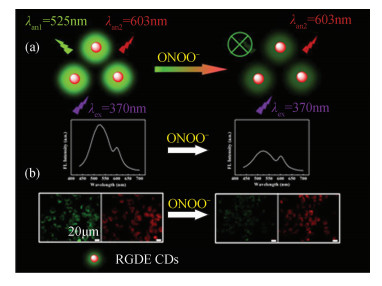
 下载:
下载:


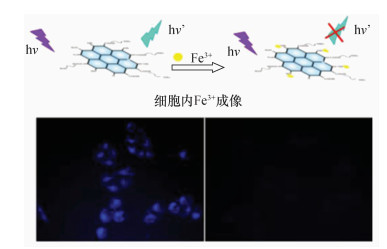
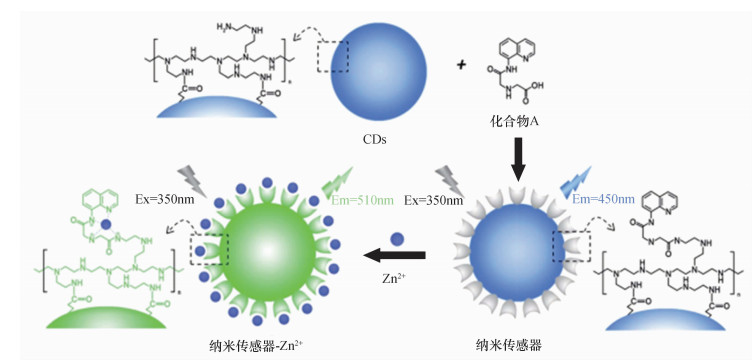

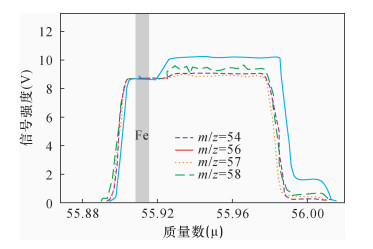
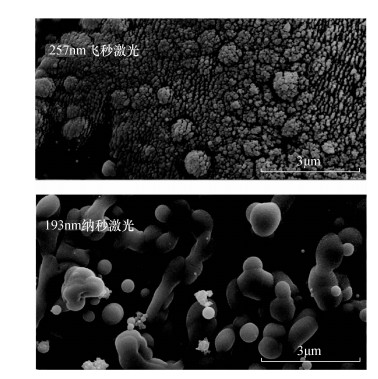

 京公网安备 11010202008159号
京公网安备 11010202008159号